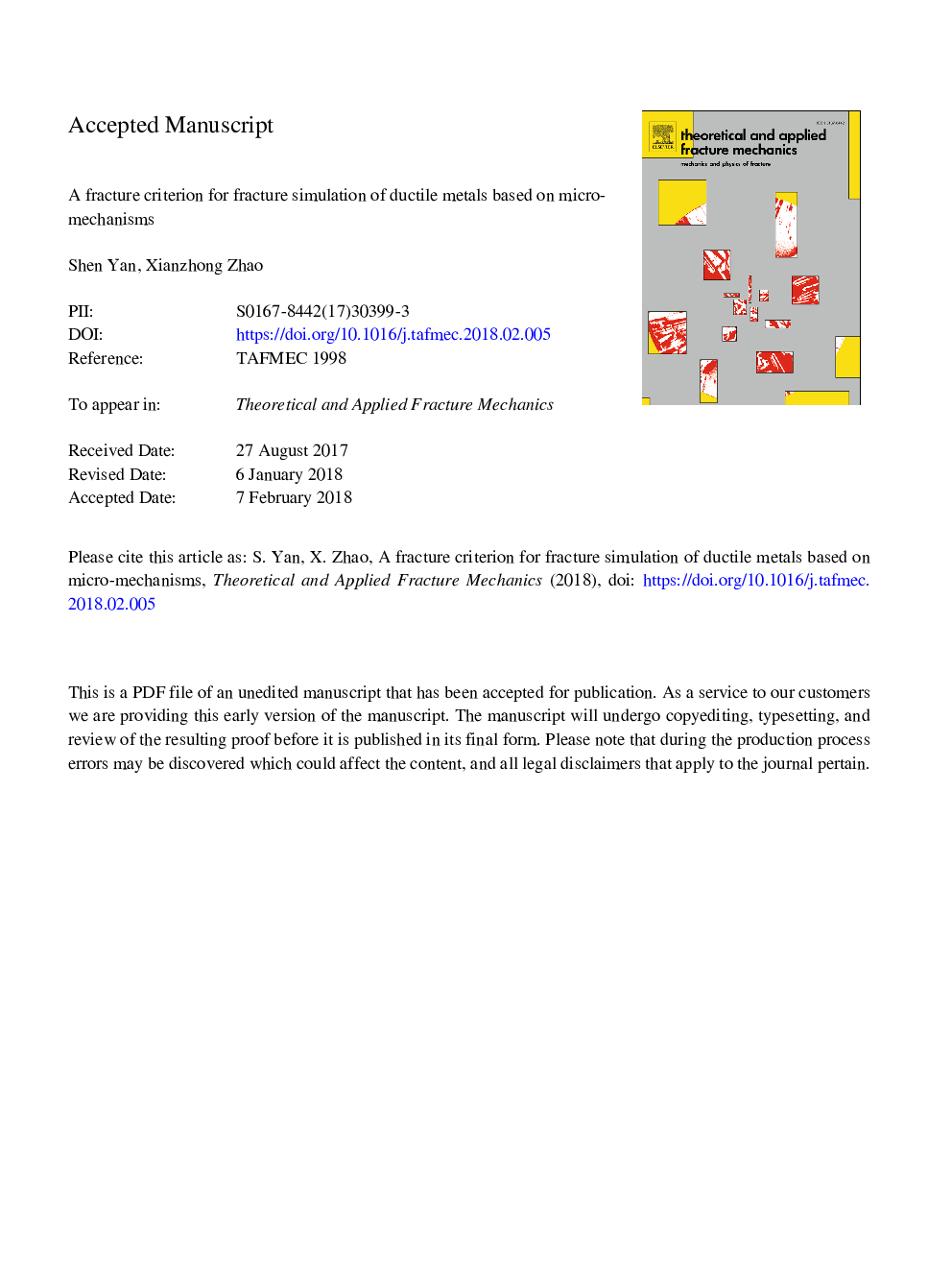| Article ID | Journal | Published Year | Pages | File Type |
|---|---|---|---|---|
| 7196150 | Theoretical and Applied Fracture Mechanics | 2018 | 44 Pages |
Abstract
A correct representation of the fracture limit for material subject to various stress states is essential for the accurate prediction of fracture behavior. In this paper, a comprehensive fracture criterion for ductile metals is developed. The proposed criterion is composed of two competing and correlated sub-criterions corresponding to the stress states where the shear fracture and tensile fracture modes can be captured. Especially, a new shear fracture criterion is developed based on microscopic studies on the void nucleation and evolution behavior. According to this criterion, fracture in low positive and negative triaxiality regime is triaxiality sensitive and Lode parameter dependent. The tension fracture criterion is derived from the Rice and Tracey void growth equation, thus it predicts the ductility loss due to stress triaxiality in an exponential function. The overall fracture criterion has five free parameters including the strain hardening exponent, and is proved to be capable of predicting fracture correctly in almost all types of specimen tests in the literatures. A calibration strategy by using four specimen tests is proposed, and specimen tests are performed to calibrate and validate the fracture criterion for Q345 steel. Numerical simulation of the tests are performed, and the experimental and numerical results agree well, which validates the proposed fracture criterion and shows its application in fractures modelling of large-scale engineering problems.
Related Topics
Physical Sciences and Engineering
Engineering
Mechanical Engineering
Authors
Shen Yan, Xianzhong Zhao,
